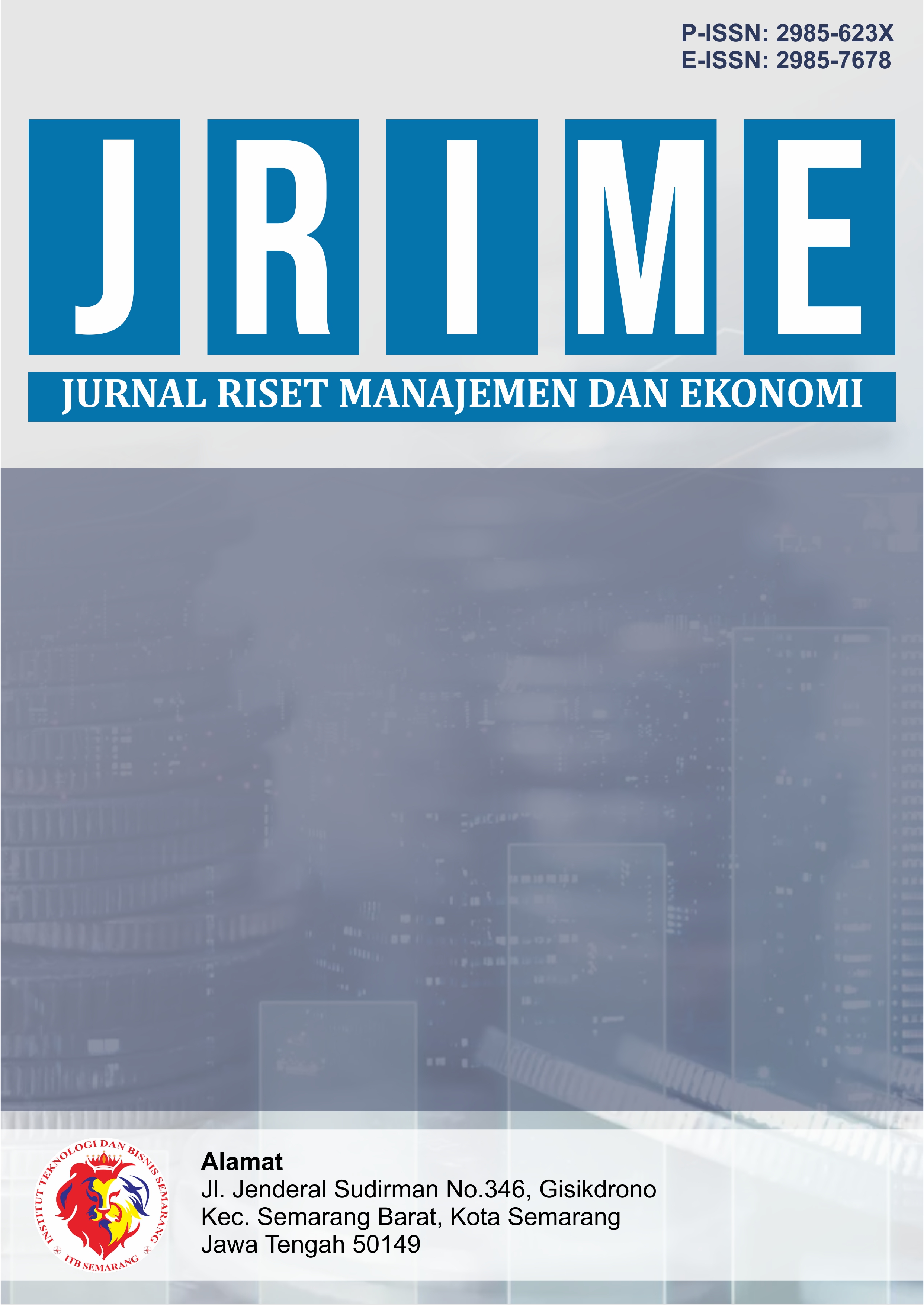Pengaruh Gaya Hidup Hedonisme, Visual Merchandising, dan Diskon Harga Terhadap Pembelian Impulsif di MR. DIY Plaza Medan Fair
DOI:
https://doi.org/10.54066/jrime-itb.v2i4.2408Keywords:
Hedonistic Style, Visual Merchandising, Price Discount, Impulse BuyingAbstract
Developments in the world of retail business require companies to have good marketing strategies to face competition. Impulse buying is a consumer behavior that must be considered when marketing products. MR. DIY is a company operating in the retail industry. Companies in this industry have intense competition. This research aims to determine the influence of a hedonistic lifestyle, visual merchandising, and price discounts on MR impulse buying. DIY Plaza Medan Fair. The influence between hedonistic lifestyle, visual merchandising, and price discounts will be analyzed partially and simultaneously. This research uses quantitative methods with 96 consumers as research samples, with a sampling technique, namely purposive sampling. Data collection was carried out through a questionnaire using a Likert scale which was distributed to respondents directly at MR. DIY Plaza Medan Fair, while secondary data was obtained from literature study. Data analysis methods use validity tests, reliability tests, classical assumption tests, multiple linear analysis, and hypothesis testing with the help of SPSS. The results of the research show that the hedonistic lifestyle variable has a significant effect on impulse buying. Furthermore, the visual merchandising variable has a significant effect on impulse buying. And the price discount variable does not have a significant effect on impulse buying. The result of the determination test was that the correlation coefficient (R) was 0.58, which means that each variable, namely hedonistic lifestyle (X1), visual merchandising (X2), and price discounts (X3) were interconnected with purchasing decisions (Y) by 58%. This means that a hedonistic lifestyle, visual merchandising and price discounts have contributed to impulse buying..
References
Bank Indonesia. (2023). Survei Penjualan Eceran Agustus 2023. Diakses pada 25 Oktober 2023, dari https://www.bi.go.id/id/publikasi/laporan/Pages/SPE- August-2023.aspx
Ichsanudin dan Purnomo. (2021). Monograf: Analisis Gaya Hedonis, Status Sosial, Variasi Produk Terhadap Keputusan Pembelian Melalui Citra Merek. Bandung: Media Sains Indonesia
Kotler dan Keller, Kevin Lane. (2018). Marketing Management, 18th Edition. New Jersey: Pearson Prentice Hall Published.
Maria, Clara dan Kardinal (2023). Faktor-Faktor Yang Mempengaruhi Impulse Buying Pada MR. DIY Palembang. Jurnal Ilmiah Ekonomi Dan Bisnis, Vol. 12 No.2.
Mehta, Neha dan Pawan K. Chugan. 2013. The Impact Of Visual Merchandise On Impulse Buying Behavior Consumer: A Case From Central Mall of Ahmedabad India. Journal of Management, Vol 2 No. 2.
Putri, D. N., & Siregar, O. M. (2023). Pengaruh Discount dan Kepercayaan Konsumen terhadap Keputusan Pembelian pada Pengguna TikTok Shop di Kota Medan. Journal on Education, 6(1), 9086-9096.
Siregar, O. M., & Nasution, M. D. T. P. (2023). Perilaku konsumen offline & online. PT. Dewangga Energi Internasional
Siregar, O. M., & Nasution, M. D. T. P. (2023). Revolutionizing Marketing: Strategi Inovatif Bisnis Modern. CV. Mitra Cendekia Media.
Sutisna (2012). Perilaku Konsumen dan Komunikasi Pemasaran, Edisi kedua. Bandung: Remaja Rosdakarya.
Tjiptono, Fandy & Diana. (2016). Pemasaran Esensi dan Aplikasi. Yogyakarta. C.V Andi Offset.
Utami, C. W. (2017). Manajemen Ritel : Strategi dan Implementasi Operasional Bisnis Ritel Modern di Indonesia (3rd ed.). Jakarta: Salemba Empat.
Downloads
Published
How to Cite
Issue
Section
License
Copyright (c) 2024 JURNAL RISET MANAJEMEN DAN EKONOMI (JRIME)

This work is licensed under a Creative Commons Attribution-ShareAlike 4.0 International License.






